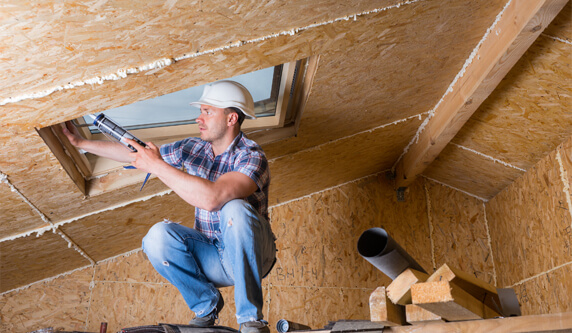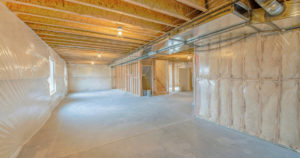Whether you’ve been living in your home for years or you’ve just moved in, proper insulation is an absolute must. And air sealing is a critical piece of the overall home insulation puzzle.
The Benefits of Air Sealing
Of course, nothing destroys residential energy efficiency faster than a sizeable air leak. At most times of the year, you simply don’t want outside air to enter your house or inside air to escape directly to the outside.
By addressing all areas of potential air infiltration, you can help keep your home warmer in the winter and cooler in the summer. Structures that are well sealed are also better buffeted from outdoor sounds and therefore tend to create indoor environments that are significantly quieter and more peaceful.
Methods of Preventing Air Infiltration
Air sealing involves stopping the flow of air through any cracks or openings in your home. These cracks and openings can occur anywhere, but the most common areas of air infiltration may go undetected or unaddressed for years.
What follows are some of the key steps in most comprehensive air sealing projects. A trained and qualified insulation and weatherization expert can determine which steps you might need and perform them according to exacting industry standards. This expert will…
- Address cracks and openings in all existing insulation.
- Caulk and seal any air leaks in wall, ceiling, and floor joints.
- Caulk and seal air leaks around structural elements such as plumbing, wiring, and ductwork.
- Caulk and weatherstrip around doors and windows to create airtight seals.
- Install pliable sealing gaskets at the bottom of every exterior door and threshold.
- Apply foam sealant to fill larger gaps around portals, baseboards, and any other areas of concern.
- Install foam gaskets behind wall-mounted outlet and switch plates.
- Use fire-resistant materials (such as sheet metal, sheetrock, and furnace cement caulk) to seal air leaks around furnaces, gas-fired water heater vents, and fireplace chimneys
Although a fireplace is a great feature that can literally light up a room, it can also present significant air infiltration issues. In addition to keeping the flue damper tightly closed when the fireplace isn’t in use, homeowners may want to consider installing a fireplace flue plug or an inflatable chimney balloon to create a more airtight and better insulated seal.
Air Sealing as Part of a Free Energy Assessment
If you want to ensure that your home is airtight, it is best to hire a qualified insulation and weatherization expert to test for leaks and perform a general energy efficiency assessment.
Homeowners throughout the state Massachusetts turn to Valley Home Insulation for no-cost and no-obligation assessments that include air sealing as an essential component. Customers who require specific air sealing or insulation upgrade services can benefit from a range of valuable incentives including a 75% instant rebate.
To schedule your free energy efficiency assessment, call the skilled and knowledgeable Valley Home Insulation team at (978) 984-7338 or go online to fill out a no-obligation feedback form today.



